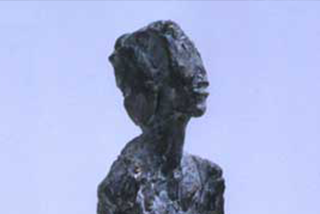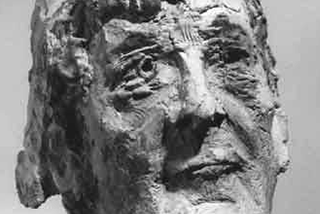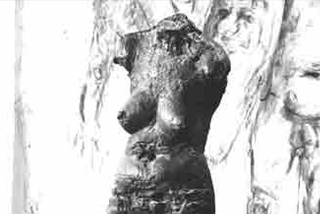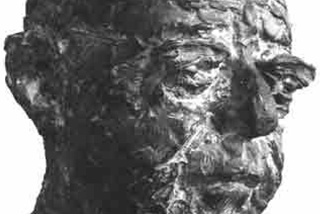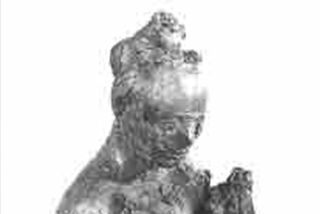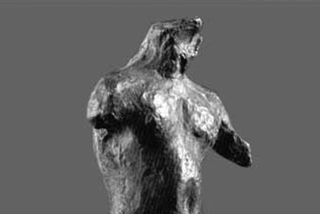
Figure and Portrait
Joachim Dunkel loved the statuette format, that size which does not aim at overwhelming from a distance, but at the detailed, the very personal, private observation at close range. In fact, the small bronze was never conceived by the artist as a preliminary study or as the first step towards a larger format. Even the life-size figures show the intimacy of the small sculpture.
A decisive feature of Dunkel's world of figures is their compelling creatureliness. Almost without exception, women and men appear in their nakedness and sexuality without any costuming. In this way they gain originality and vitality, although their bodies are not conceived as organons, are not bodily functional, but more or less torsoed. Individual features are sublimated to the human figure. This, however, does not allow us a feeling of "we"; on the contrary, irritating strangeness and distance evoke the impression of untouchability.
Dunkel sometimes supplemented the torsoed figures of the late years with surface forms cut from paper, cardboard, or sheet metal in order to counteract their physical presence with surprising access. The artist certainly wanted the sensual radiance of the bodies he modeled - but at the same time always an idol-like seeming unfamiliarity and reverie. He heightens this from case to case through the choice of material: Plaster as the final stage.
Over a period of about 50 years, 45 portraits, 10 self-portraits and various posthumous heads were created. In their attachment to the ephemeral drawing, which nevertheless does not flee but rather attacks, even touches, these sculptural portraits are not suitable for a pantheon, a Valhalla or a gallery of honorary citizens. Dunkels works are sublime statements about the counterpart, who appears without data protection, without the armor of his outer skin, as a vulnerable, but also self-injuring individual.


